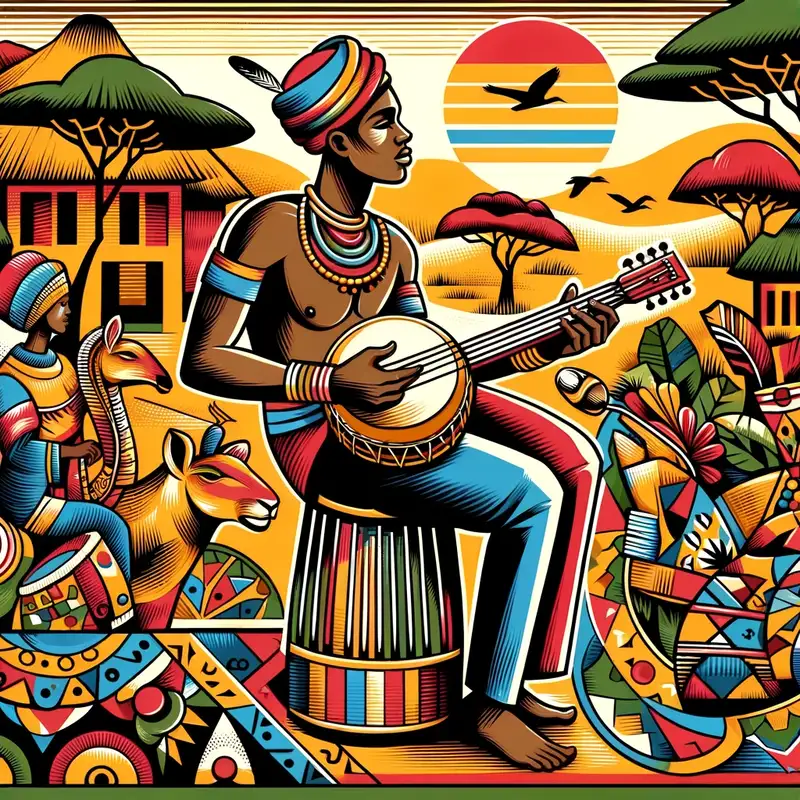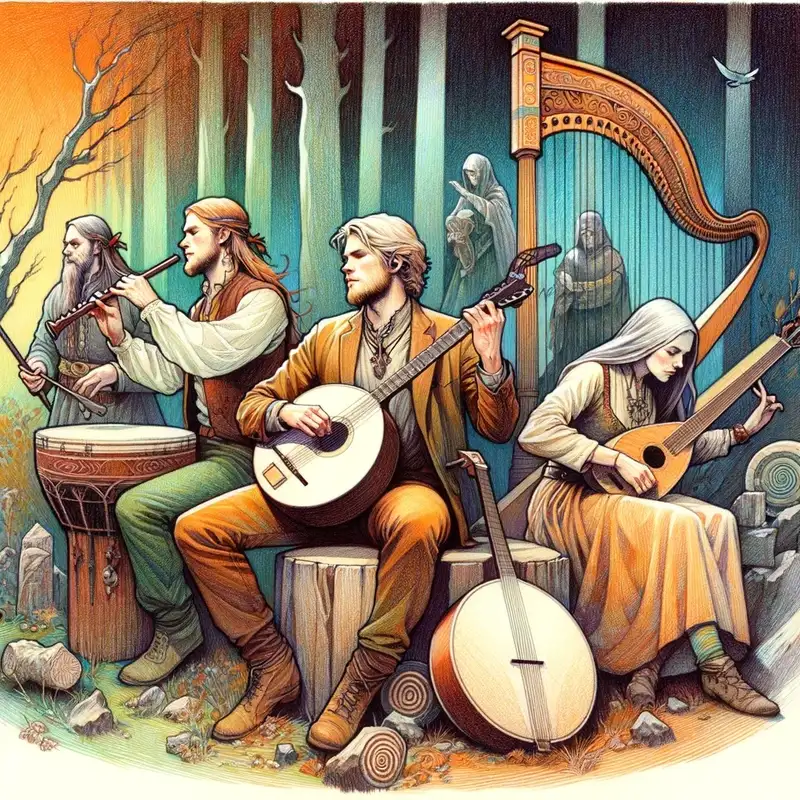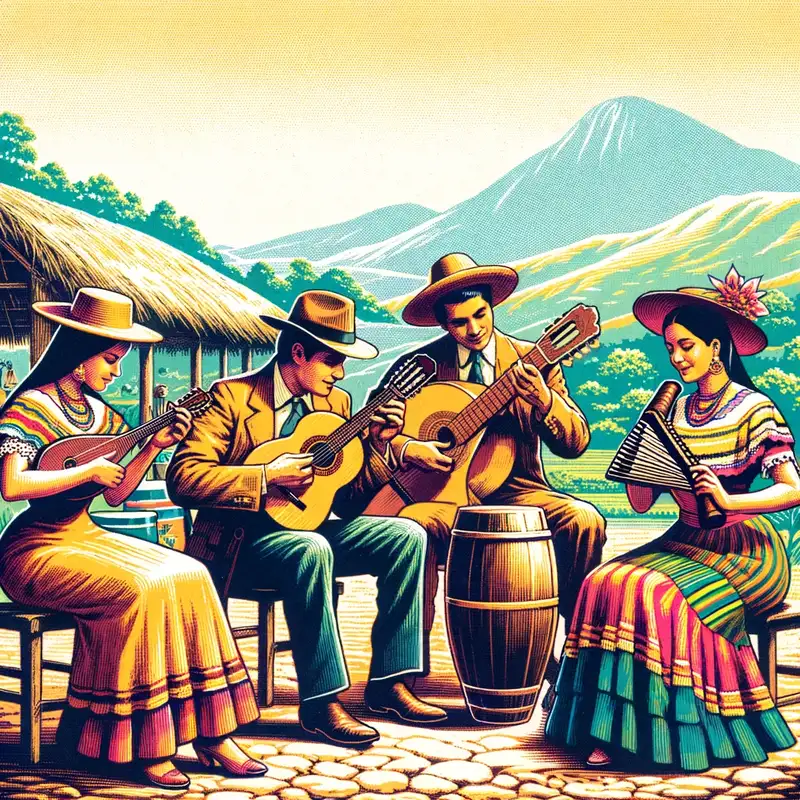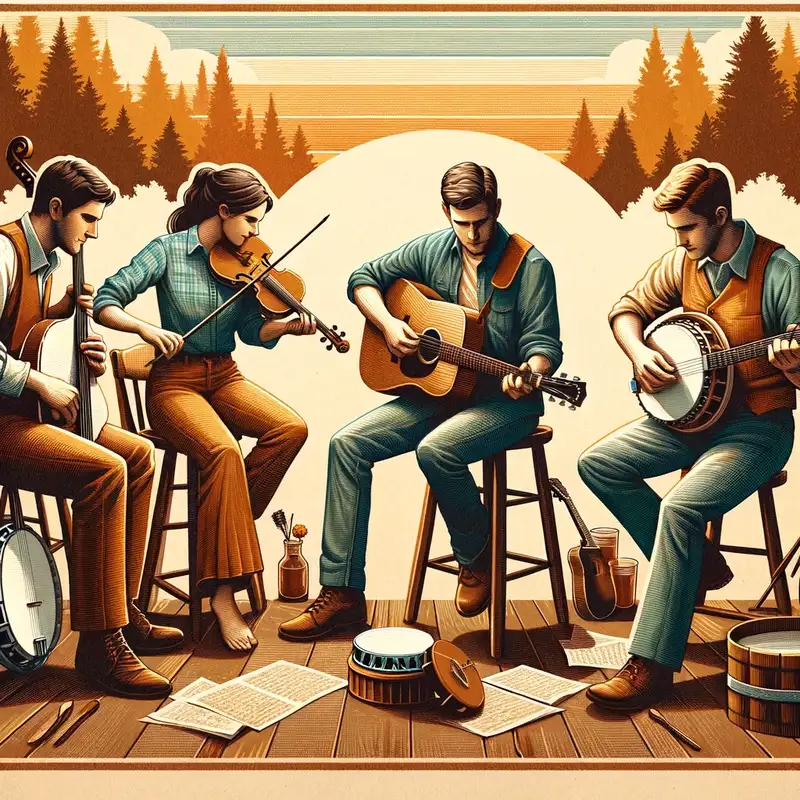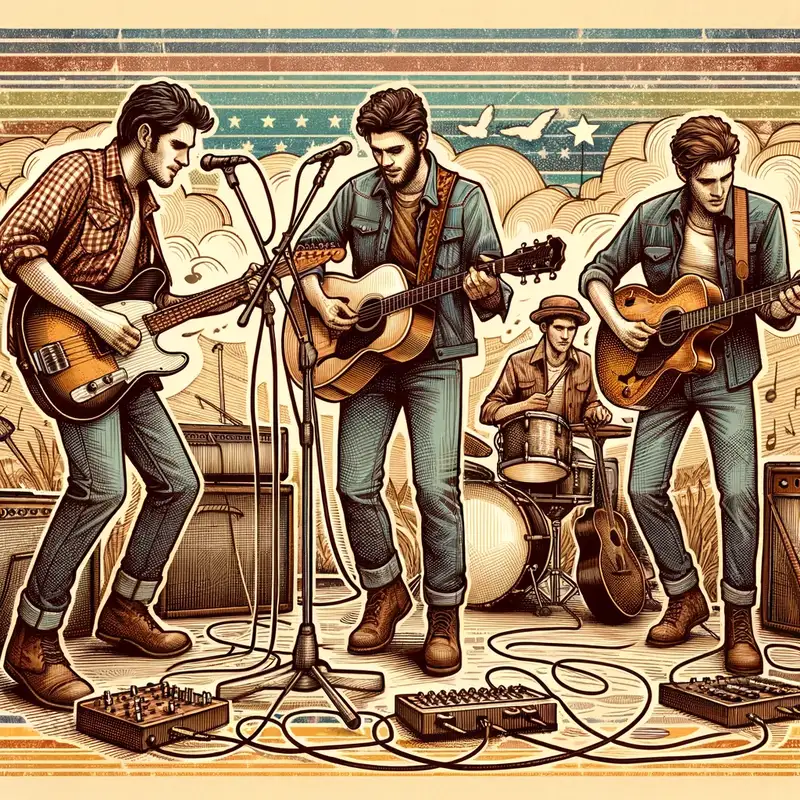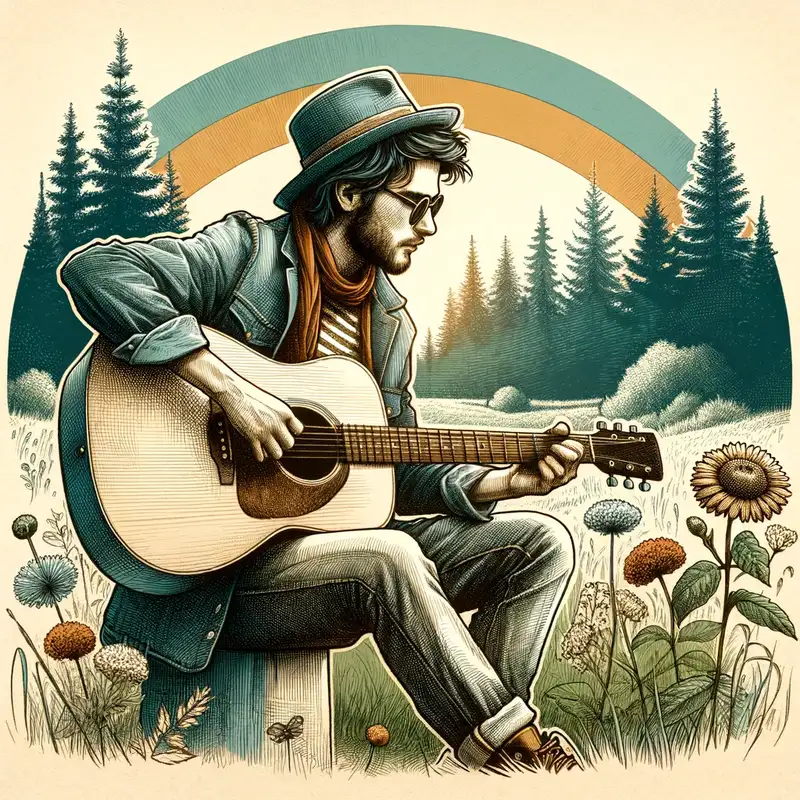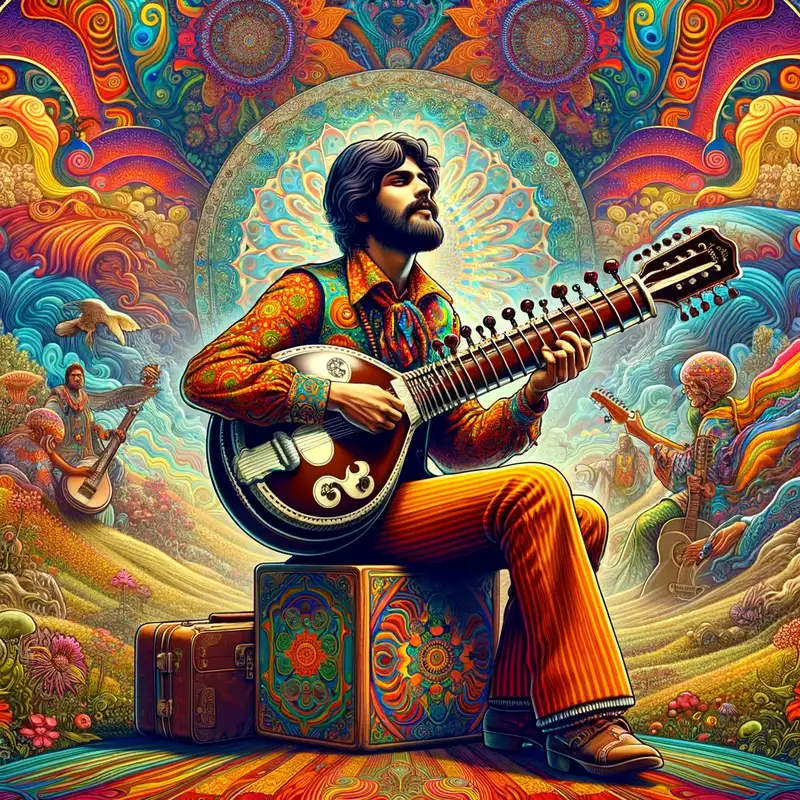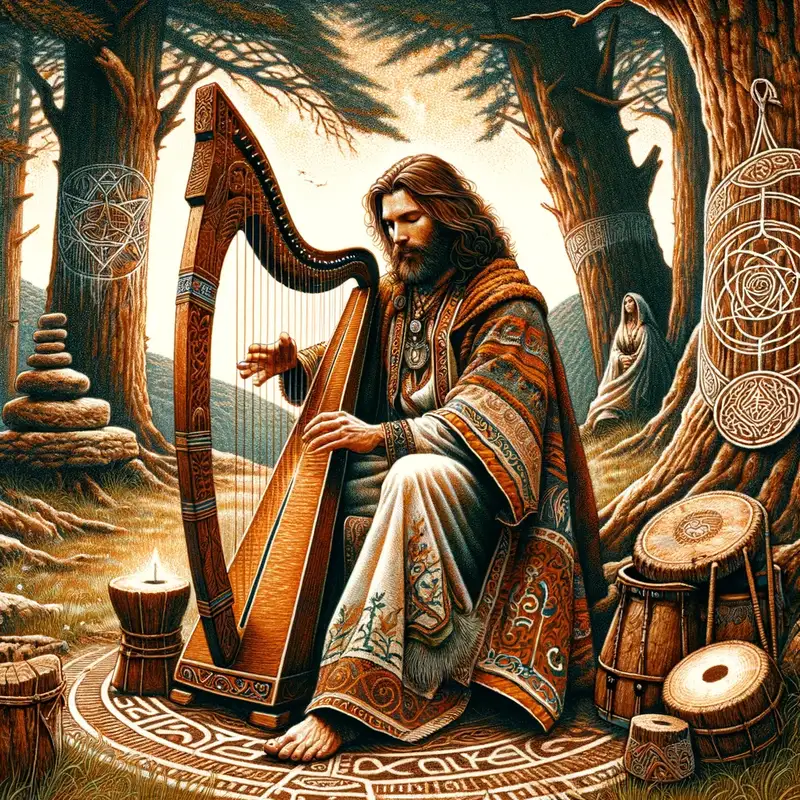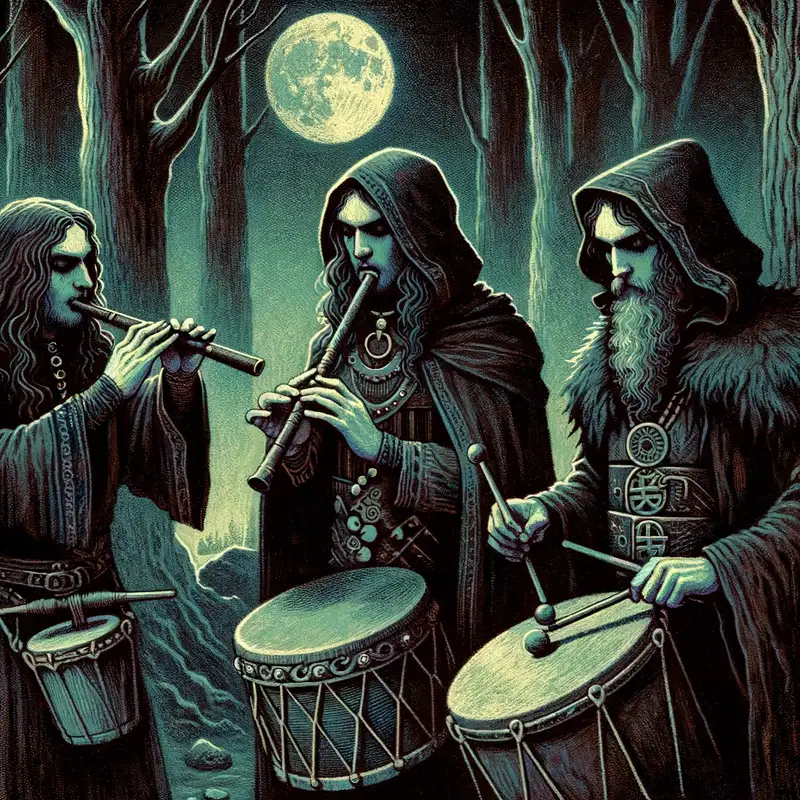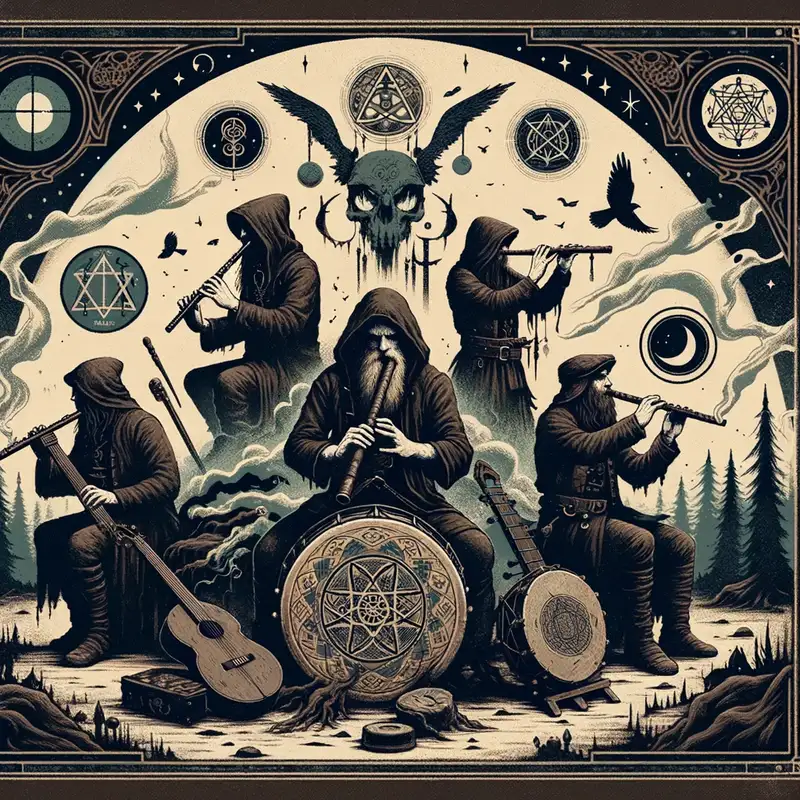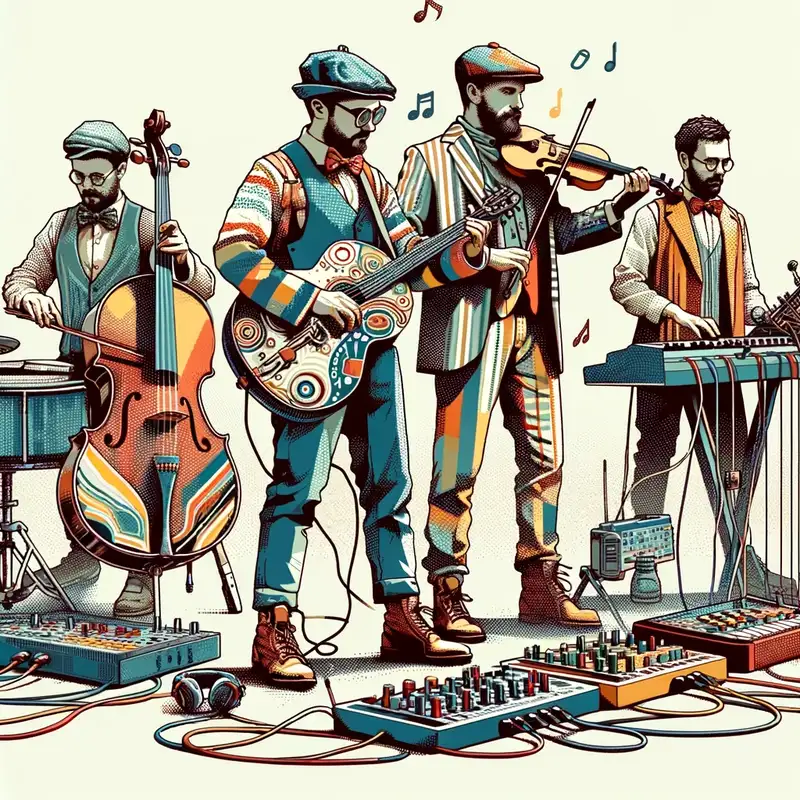Folk Music
From the story-laden ballads of the British Isles to the evocative rhythms of African tribal chants, folk music has always been a medium of storytelling, history preservation, and shared community experience.
Table of Contents
Origins & Evolution
Folk music, by definition, is the music of the “folk” or the people. It represents the tales, struggles, rituals, and dreams of everyday people, often passed down orally through generations.
Ancient Traditions: Virtually every culture has its folk traditions, often intertwining music with dance and storytelling. These might be ritualistic, as in many tribal societies, or recreational, as seen in community gatherings and festivals.
Medieval Europe: Ballads and troubadour songs, narrating tales of love, war, and chivalry, became popular.
American Folk Revival: In the 20th century, particularly the 1960s, there was a renewed interest in folk music with artists like Bob Dylan and Joan Baez popularizing old and crafting new folk songs, often with political or social commentary.
Genres & Regional Variations
- British Isles: Ballads and sea shanties are prevalent. Artists like Fairport Convention and Bert Jansch played significant roles in modern interpretations.
- Americana: Encompassing Appalachian music, cowboy songs, and Delta blues. Figures like Woody Guthrie and Pete Seeger are iconic in this genre.
- African Folk: Diverse and rich, often blending rhythmic music with dance. Instruments like the djembe and kora are common.
- Indian Folk: Ranging from the Bhangra beats of Punjab to the devotional Bhajans, Indian folk music is vast and varied.
- Latin American Folk: From the Andean music of Peru and Bolivia to the rancheras of Mexico, Latin America offers a vibrant folk tradition.
The late 20th and early 21st centuries have seen a resurgence of folk, often blended with other genres:
- Indie Folk: Bands like Mumford & Sons and artists like José González have popularized a new wave of folk music that draws on indie rock influences.
- Folktronica: A fusion of folk and electronic music. Beth Orton and Tunng are notable artists in this subgenre.
- World Fusion: Ensembles like Afro Celt Sound System have combined folk traditions from different parts of the world.
Characteristics
- Acoustic Instruments: Folk music predominantly features acoustic instruments like the guitar, banjo, harmonica, and violin.
- Lyric-centric: Stories are central to folk songs. Lyrics often address societal issues, historic events, or everyday life experiences.
- Simple Melodies: While there’s significant variation, many folk songs have simple, hummable melodies.
- Community Focus: Folk music often involves community participation – group choruses, call-and-response patterns, or communal dances.
